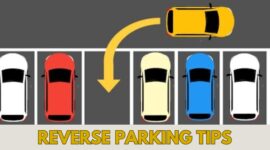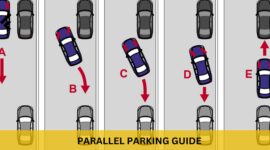Parallel Parking Guide for Birmingham Driving Lessons
Parallel parking is a skill that many drivers dread, but it’s an absolute must-learn to pass your UK driving test. It can be a daunting task, especially for novice drivers, but with the right technique and practice, anyone can become a parallel parking pro. Here we will discuss some tips and tricks to help you learn the art of parallel parking to create a guide to driving lessons in Birmingham, and improve your general driving skills.
What is parallel parking?
Parallel parking is a method of parking a car parallel to the road, usually in a row of other cars. Typically, you drive alongside a vehicle in front of a space before backing up into the space. This is generally considered to be one of the more difficult skills for new drivers to master, but with practice, it becomes second nature, and finding a parking space on a busy road after passing the test sometimes becomes very important.
When do I need to parallel park?
Parallel parking allows you to park in a smaller space than parking forward. Advancing into a roadside space is normally only possible if two consecutive spaces are free. Back allows the driver to use a single space no longer than the car. In most residential areas, roadside parking is the norm, and in town and city centres where space is at a premium, parallel parking may be the only way to secure a parking space.
How to parallel park
Parallel parking can be difficult even for experienced drivers. This is often the most practiced manoeuvre during driving lessons in Birmingham, but it is also the cause of many failures. So, among the various steps and manoeuvres that you have to perform in your driving test, parallel parking is the part that makes people the most nervous. Here is a step-by-step guide to help you.
Step 1: Find a suitable parking space
The first step to successful parallel parking is finding a suitable space. Look for a parking space that is at least 1.5 times the length of your car and has enough space in front and behind the parking space. Make sure there are no obstructions and indicate your intention to park using your turn signal.
Step 2: Position the car
Once you’ve found a suitable spot, park next to the car in front of the parking lot. Align the rear bumper with the rear bumper of the parked car. Maintain a safe distance of approximately 2 to 3 feet between two vehicles.
Step 3: Reverse and Angle the Car
Put the car in reverse and begin turning the steering wheel to the right. Check your mirrors and look over your right shoulder at the rear of the car. Back up slowly, keeping your car at a 45-degree angle to the curb. Try to position your car parallel to the car parked in front of you.
Step 4: Straighten the wheels
Once the front door is aligned with the rear bumper of the parked car, turn the steering wheel to the left to straighten the wheels. Slowly back up until your car is parallel to the sidewalk and maintain an appropriate distance from the car behind you.
Step 5: Final Adjustments
At this point, it should be parallel to the curb and the car should be properly positioned within the designated area. If it’s out of position, you can make fine adjustments by pulling it forward and repeating the process.
Practice Makes Perfect
The key to mastering parallel parking is practice. Find an empty parking lot or a quiet street and practise parallel parking using cones and other signs. This will give you a sense of the size of your car and how much space you need to park it properly. When practicing, be aware of your surroundings and avoid blocking driveways.
Enroll in Driving Lessons
If you still have trouble parallel parking, consider enrolling in driving lessons in Birmingham, UK. At Heartlands Driving Test Solutions, our professional driving instructors provide personalised tips and techniques to improve your parallel parking skills. We can also help you prepare for your UK driving test and help you feel confident in all aspects of driving.
Conclusion
Parallel parking may seem like a difficult task, but with practice and proper technique, anyone can master it. By understanding the basics, using reference points, and taking your time, you can improve your parallel parking skills and become a safer driver. If you need more help, don’t hesitate to sign up for driving lessons. With determination and practice, you’ll be parallel parking like a pro in no time




